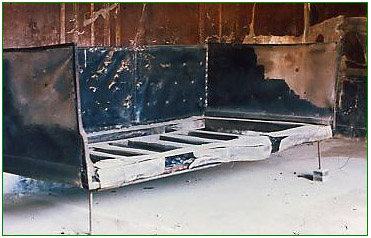
Roman Wood & Tufted Leather Sofa,, c79 AD, Herculaneum
** It is said that nothing new in furniture design has been introduced since 1830 -
all just 'refashioned' with a few modifications.
In fact today's contemporary furnishings also have their root
in the excavations at Herculaneum.
Their straight lines, formal restraint, and sense of lightness of weight
go back 2000+ years.
The wood and tufted leather sofa above is not by Eero Saarinen, c1955,
but found preserved beneath the mud... in Herculaneum.
During the second half of the 18th century, classical form and ornament was slowly
incorporated into the styles of the British and European Neoclassical period.
The fashion for Neoclassical lasted into the early 19th century...
then being replaced briefly by several 'revivals'...and surface ornamentation.
Neoclassical forms were re-found c1880 with the Arts and Crafts Movement...
then Art Deco of the 1920s and 30s...
and
mid-20th century modern - so back in vogue again today.
So the 'new modern' is not really all that 'new' at all -
just being recycled and reinterpreted once more! **
Legend & Photographic Attributions of Interest :
The Furniture : M. Ford Creech
The National Archaeological Museum of Naples :
Triton Mosaic; and Banquet Scene Fresco
Carbonized Leather & Wooden Sofa, House of Carbonized Furniture, Herculaneum
Other Images : Shar-Pei Puppy : Yana Mishina
Portrait : First Steps, Josep Suria, Spain
Fourth Position (Dancer) : Kelly Perkovich, Iris Photography, Pittsburgh
The Balance : Permission, License or Public Domain
Our
'furniture images' above are linked to detailed website pages.
|